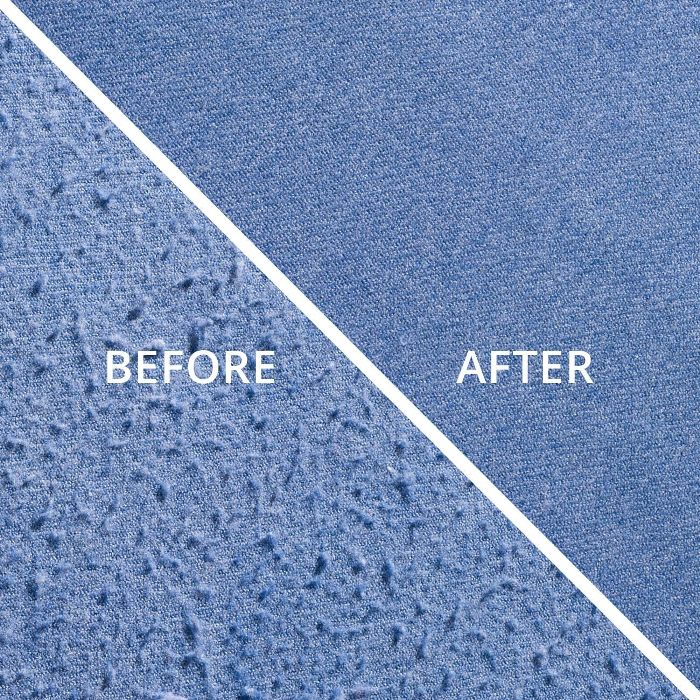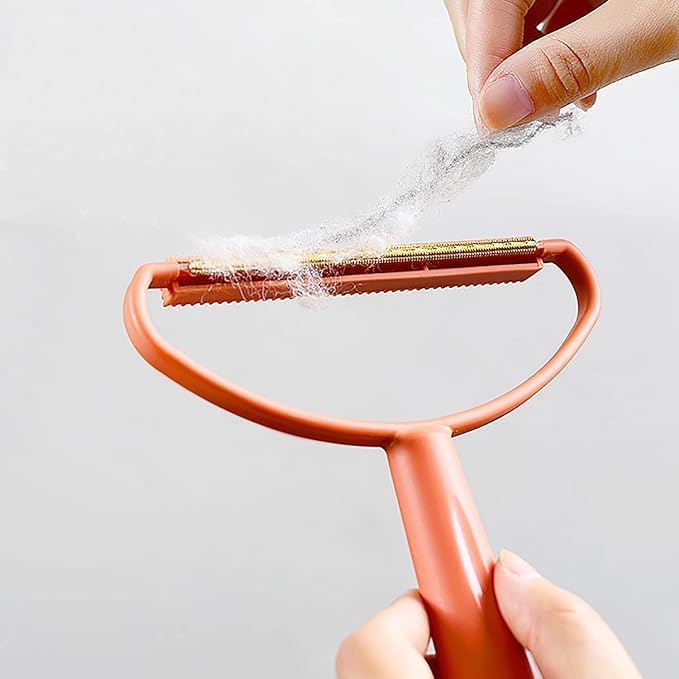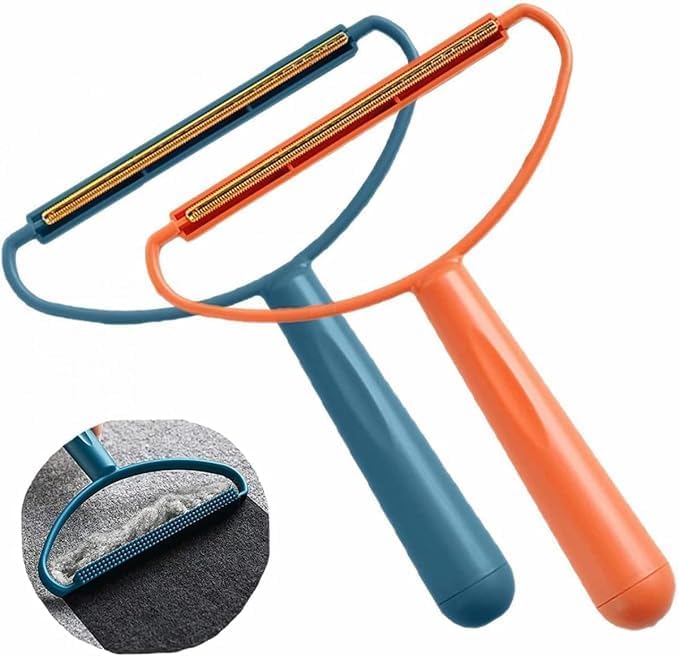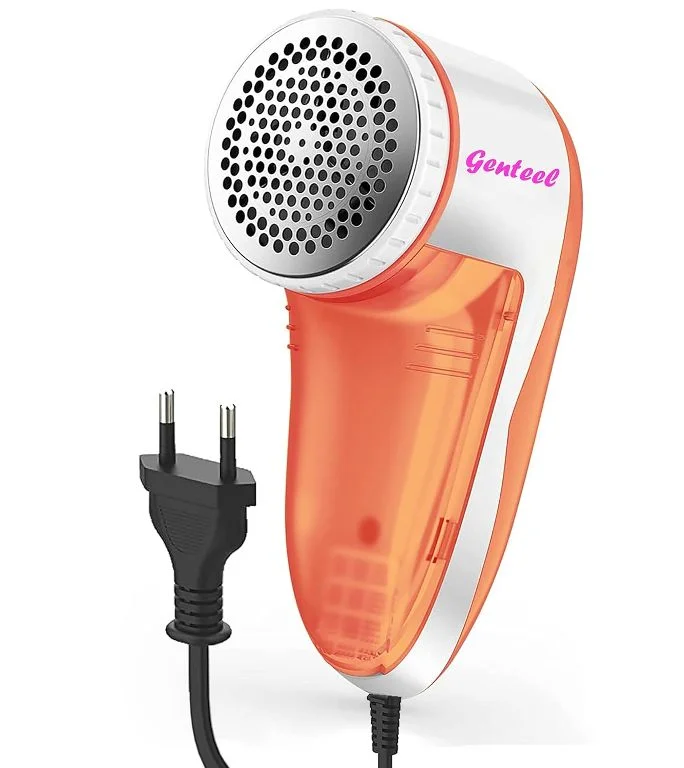Table of Contents
1. Introduction
Discover the unsung hero in fabric care – the lint remover. Delve into the intricacies of lint, those tiny fibers that cling to our clothes post-wash, affecting both aesthetics and garment longevity. Explore why lint-free fabrics matter and how specialized tools, be it manual brushes, rollers, or electric wonders, ensure your clothes stay pristine.
2. Understanding Lint
Let’s break down lint into bite-sized information. These tiny fibers or particles break free from fabrics during wear and washing, with high-friction spots like cuffs and collars being major culprits. Washing and drying processes subject textiles to mechanical stress and various chemicals.
Why does lint matter?
It messes with the look of our clothes, triggers allergies, and, worse, weakens fabric structure. In the upcoming sections, we’ll delve into the nitty-gritty of lint removal, covering types of lint removers and effective methods.
3. Types of Lint Removers
Explore the arsenal of tools designed to combat lint – manual options like brushes and rollers, and electric powerhouses:
a. Manual Lint Removers (Brushes, Rollers)
Classic tools for lint battles, these offer precision and gentleness, targeting specific areas. Bonus: they’re gentle on delicate fabrics.
b. Electric Lint Removers
Tech-savvy solutions using rotating blades or screens for efficient lint removal. Perfect for heavy lint situations or when time is of the essence.
c. Comparison of Different Types - Pros and Cons
Weighing pros and cons, manual removers are gentle and portable but may be time-consuming. Electric removers are efficient and time-saving but require a power source. Consider your fabric type, lint accumulation, and personal preferences.
In the next sections, we’ll discuss the benefits of using lint removers and guide you in choosing the right tool for different scenarios.
4. Unlocking the Benefits of Using a Lint Remover
A lint remover is your secret weapon in fabric care, offering advantages beyond aesthetics:
a. Prolongs the Life of Clothing
Regular lint removal safeguards garments against premature wear, enhancing overall durability.
b. Improves the Appearance of Fabrics
Diligent use restores the original luster of fabrics, revitalizing their visual appeal.
c. Reduces the Risk of Allergies Caused by Lint
Minimize health risks associated with allergies by making lint removal a regular practice.
Using lint removers strategically goes beyond enhancing aesthetics; it becomes a proactive measure in preserving clothing longevity, elevating visual appeal, and fostering a healthier living environment. The upcoming sections will delve into practical considerations, guiding you on selecting the right lint remover and sharing effective lint removal techniques.
5. How to Choose the Right Lint Remover
Elevate your lint removal game with these tips:
a. Consideration of Fabric Types
Opt for gentle manual removers for delicate fabrics and electric ones for sturdier materials.
b. Budget-Friendly Options
Align the tool with your budget without compromising effectiveness.
c. Reviews and Recommendations
Tap into user insights before making a purchase for informed decision-making.
In summary, the right lint remover aligns with your fabrics, fits your budget, and has positive reviews. Carefully weigh these factors for confident decision-making. The upcoming sections will explore DIY lint removal methods and real-life experiences, offering a holistic guide to conquering lint-related challenges.
6. Mastering Lint Removal: Tips and Techniques
a. Proper Technique for Manual Lint Remover
Treat manual lint removers with finesse, focusing on high-traffic areas and handling delicate fabrics with care.
b. Maintenance Tips for Electric Lint Remover
Efficiency comes with maintenance; clean blades, inspect cutting mechanisms, and check the lint trap for optimal performance.
c. Common Mistakes to Avoid
Be wary of excessive pressure, neglecting maintenance, and choosing the wrong tool for fabric type.
7. DIY Methods for Lint Remover: Sustainable, Effective, and Eco-Friendly
For sustainable and cost-effective solutions, explore DIY methods:
a. Using Household Items for Lint Removal
Utilize packing tape, Velcro, or dryer sheets for effective lint removal.
b. Eco-Friendly Alternatives
Opt for natural sponges, reusable fabric lint removers, or create a DIY lint roller using double-sided tape.
8. Frequently Asked Questions (FAQs)
a. Common Queries Related to Lint Remover
- Q: Can lint removers be used on all types of fabrics?
- A: While many lint removers are versatile, consider the fabric type. Delicate fabrics may need gentler manual lint removers, while sturdier materials can handle electric options. Always check manufacturer guidelines for compatibility
2. Q: How often should I use a lint remover on my clothes?
- A: The frequency depends on factors like fabric type, wear, and washing habits. Regularly check for lint accumulation, especially in high-friction areas, and use a lint remover as needed to maintain the appearance and longevity of your clothing.
3. Q: Are there eco-friendly lint remover options available?
- A: Yes, several eco-friendly alternatives, such as reusable fabric lint removers or DIY solutions using household items, offer effective and sustainable options for lint removal.
b. Detailed Answers and Solutions
- Q: My electric lint remover is not working as well as it used to. What could be the issue?
- A: Check the lint trap or collection compartment for buildup and clean it. Ensure the blades or screens are not damaged or worn out. Regular maintenance, including cleaning and blade inspection, can restore the device’s effectiveness.
2. Q: Can I use a lint roller on furniture upholstery?
- A: Yes, lint rollers are versatile and can be used on furniture upholstery. Roll gently in one direction to lift away lint. For stubborn lint, consider using masking or packing tape as a DIY alternative.
3. Q: Is it safe to use an electric lint remover on delicate fabrics like silk?
- A: Electric lint removers with adjustable settings can be safe for delicate fabrics when used on the lowest setting. However, always test in an inconspicuous area first and follow manufacturer recommendations to prevent any potential damage.
9. Conclusion: Lint remover
In conclusion, the journey through the intricacies of lint removal has unveiled its profound impact on the longevity and aesthetics of our clothing. The humble lint, often overlooked, can be a formidable adversary to the impeccable appearance and durability of our favorite garments.
For online purchases, kindly consider using our affiliate link to support our website



